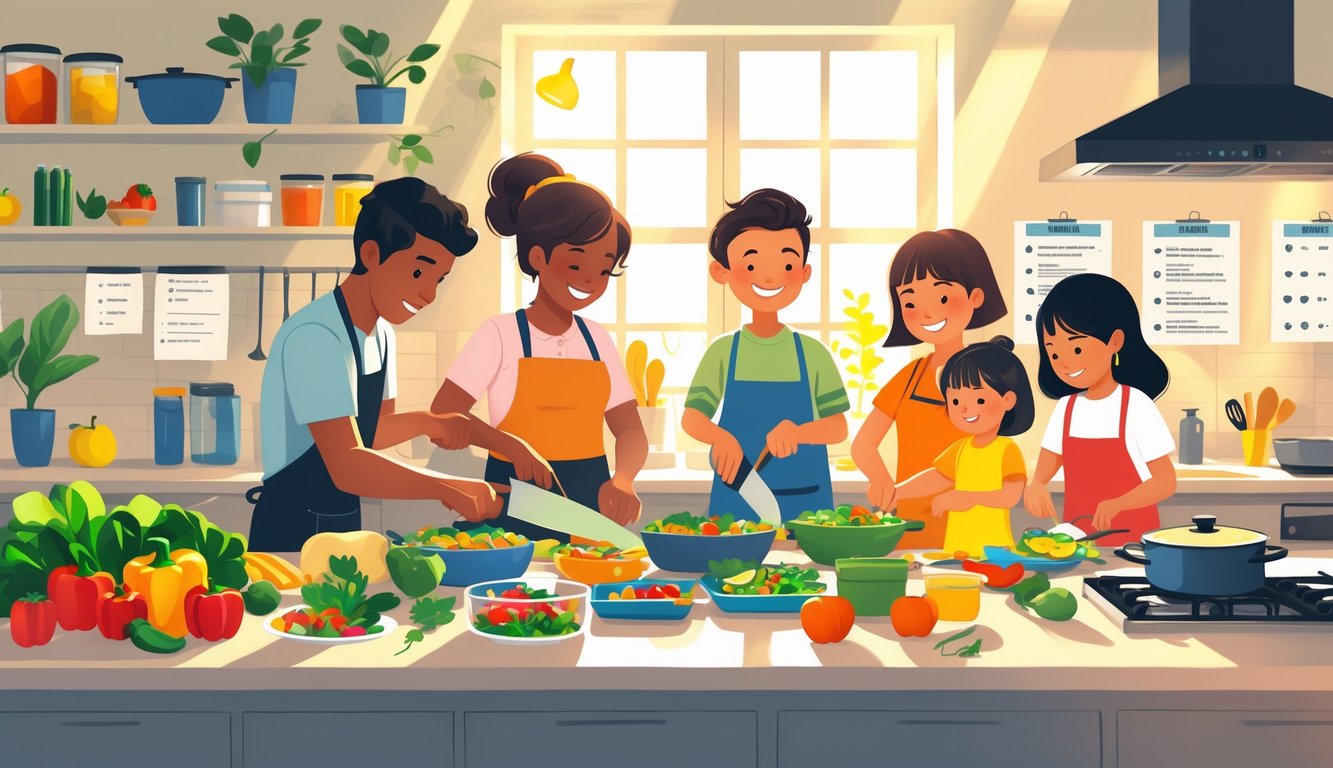
Creative Reinventions for Family Favorites
There’s nothing like the existential dread of leftover roast chicken staring at you while everyone pretends they’re not hungry. I usually shred it, dump it in enchiladas or soup, or just drown it in some sauce and hope nobody asks questions. Once, I used this spicy garlic thing that looked sketchy, but it vanished. You don’t need recipes for this stuff—just toss weird combos into the slow cooker and fake confidence.
My kids? Oblivious. I hide leftover veggies under cheese in quesadillas or mash them into muffins. Texture hides a lot. I read about a mom on this home economics site who makes extra on purpose, says it saves her time on school mornings. I don’t have school kids, but it totally works for work lunches. The trick is pretending leftovers are “planned” and not just avoidance of another pizza night.
Reducing Food Waste with Effective Storage
Stacking plastic tubs of “what even is this?” Never again. I caved and bought glass containers with erasable labels because I was tired of fridge roulette. Keeping stuff where I can see it—front and center, not shoved behind the pickles—means I actually use it. There’s this public health campaign that claims labeling and reminders cut food waste by 25%. Wild, if true.
My freezer game is borderline OCD. I portion out chili, rice, or whatever into bags, suck the air out with a straw (trust me, it works), and double-wrap anything I care about. Freezer burn trashed a whole lasagna once, never again. People toss so much food just because it’s buried. Every time I throw something out, I picture myself tossing cash in the trash. Not dramatic at all.
Grocery Shopping Tips for Hassle-Free Meal Preparation
Why do I end up with four bags of carrots and zero onions? Every. Single. Time. If I skip my list, it’s chaos, but somehow, even with a list, I mess it up. Apparently, picking ingredients on purpose and shopping seasonally is supposed to save me money and time. I keep forgetting that and wing it anyway. Am I just stubborn?
Efficient Store Visits and Bulk Buying
I once missed a dentist appointment because I thought I’d “just pop in” for groceries. Never trust your brain alone. A meal prep list—real, not scribbled on a receipt—keeps me from losing my mind. I sort it by aisle now, not that it helps me remember the one thing I actually need. One weekly haul saves gas, if not my patience.
My freezer only looks organized after a bulk buying spree. Family packs of chicken or beans make me feel like a prepper, right until I forget what’s in there. Rotate your stash. Seriously. Put new stuff behind old. Otherwise, you’ll find a mystery meat glacier from 2022. Supposedly, 30% of groceries get trashed at home—mostly from impulse buys or fridge amnesia. I believe it.
Choosing Quality Ingredients for Meal Prep
Wilted spinach? Only good for compost. I try to grab crisp greens, avocados that aren’t rock-hard, and bell peppers that don’t look like they’ve been in a bar fight. The smell test is my go-to—labels lie, fruit doesn’t. A chef friend swears by the “firmness” test, but honestly, every apple I touch is bruised.
Pre-chopped mixes are tempting but turn slimy in days. Chopping your own takes longer but lasts. I stick with stuff that won’t die in two days—cabbage, carrots, those weirdly indestructible veggies. If you’re lost on what’s “healthiest,” dietitians say little swaps—like brown rice—are sneaky wins. Not that my family notices.
Seasonal Shopping for Budget-Friendly Plans
Walk into the store in June and see watermelon priced like gold? Hilarious if you’re rich. Otherwise, buying what’s in season saves money and actually tastes good. Strawberries in January? Meh. July strawberries? Actually taste like strawberries.
If I pay attention to sales, I don’t end up with sad, ancient sweet potatoes. Farmer’s markets are hyped for a reason—fresher stuff, and you meet the person who grew it (they usually care more than I do). You can cut waste and stretch meals by building meals around seasonal finds. Suddenly, everything’s about what’s good this month, not that random can of corn I never wanted.
Organizing and Storing Your Meal Prepped Foods
I swear my fridge is full to the ceiling. One more container tips over, I’m done with meal prep forever. But storing things right actually saves me from weeknight panic, keeps leftovers from smelling like death, and means I can find snacks without moving half the fridge.
Best Containers and Storage Solutions
Where do all the lids go? Seriously. If you want to stack stuff and not cause an avalanche, glass containers with locking lids (Pyrex, Anchor Hocking, whatever) are worth it. No weird stains, no microwave smells. Plastic is okay for dry stuff, not for anything red or greasy. I read a food safety thing that said dry goods—rice, beans—need airtight containers or they’ll taste like freezer. My grandma says lentils get freezer burn, so I listen. Also, raw meat goes on the bottom shelf. Not with your yogurt. I’m not arguing with the USDA after cleaning up raw chicken juice. Never again.
Labeling and Rotation for Freshness
Markers vanish faster than socks. Still, scribbling a date on masking tape means I don’t have to play “guess that smell.” Dietitians say meal preps last about four days in the fridge—freezing only works if you’ll actually remember to thaw. My kids never warn me before six mystery soups turn into frozen fossils.
If I don’t shove the old stuff up front, it disappears for weeks. Science experiments, every time. There are apps for tracking leftovers, but I’d rather just slap a date on things and move on. Experts say it all the time: If you see it, you eat it. If not, it’s gone. Wish my brain worked that way at 7 a.m.



